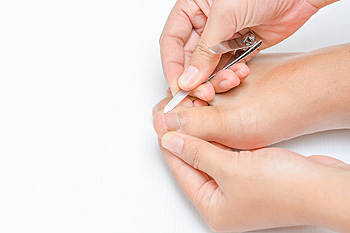
Ingrown toenails, a common foot ailment, occur when the edges of the toenail grow into the surrounding skin, causing pain, redness, and swelling. Factors such as cutting toenails too short and rounding them, or wearing tight-fitting shoes can contribute to the development of an ingrown toenail. To manage ingrown toenails, practicing good foot hygiene by washing feet regularly, changing socks, and cutting toenails straight across is essential. Gentle pushing of the skin away from the nail can also provide relief. However, if symptoms persist or worsen, seeking professional help is suggested. A podiatrist can provide the appropriate treatment options, which may include surgical intervention to remove part or all of the toenail, if necessary. If an ingrown toenail is affecting your daily activities or has become infected, it is suggested that you schedule an appointment with a podiatrist for personalized care and effective treatment.
Ingrown toenails may initially present themselves as a minor discomfort, but they may progress into an infection in the skin without proper treatment. For more information about ingrown toenails, contact Scott Matthews, DPM, MD of Salem Foot Care . Our doctor can provide the care you need to keep you pain-free and on your feet.
Ingrown Toenails
Ingrown toenails are caused when the corner or side of a toenail grows into the soft flesh surrounding it. They often result in redness, swelling, pain, and in some cases, infection. This condition typically affects the big toe and may recur if it is not treated properly.
Causes
- Improper toenail trimming
- Genetics
- Improper shoe fitting
- Injury from pedicures or nail picking
- Abnormal gait
- Poor hygiene
You are more likely to develop an ingrown toenail if you are obese, have diabetes, arthritis, or have any fungal infection in your nails. Additionally, people who have foot or toe deformities are at a higher risk of developing an ingrown toenail.
Symptoms
Some symptoms of ingrown toenails are redness, swelling, and pain. In rare cases, there may be a yellowish drainage coming from the nail.
Treatment
Ignoring an ingrown toenail can have serious complications. Infections of the nail border can progress to a deeper soft-tissue infection, which can then turn into a bone infection. You should always speak with your podiatrist if you suspect you have an ingrown toenail, especially if you have diabetes or poor circulation.
If you have any questions, please feel free to contact our office located in Wikesboro, NC . We offer the newest diagnostic and treatment technologies for all your foot care needs.
